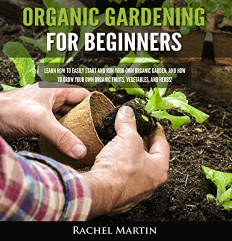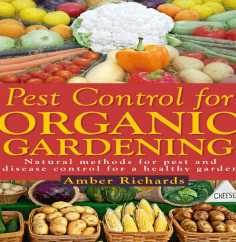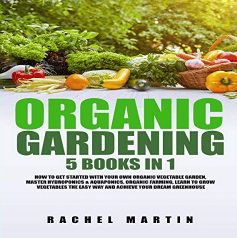How to Grow Mint – Complete Guide. Grow & Care
Are you looking to Grow Mint? You Can Grow It!
Mint is one of the easiest plants you can grow and you can get started growing some nice varieties of Mint from the comfort of your own home. Let’s have a look at what you need to know when you start growing Mint and how you can take care of your beautiful, delicious, and healthy Mint plants.
Seed Your Future Today!
Chapters
- Wat is Mint?
- Muntvariëteiten om te groeien
- Munt uit zaad kweken of uit stekken vermeerderen?
- Hoe munt te planten
- Munt kweken in een pot
- Thuis munt kweken
- Hoe zorg je voor munt?
- Hoe munt te oogsten
- Munt bereiden en gebruiken
- Hoe munt te bewaren
- Muntplagen en ziekten
- Leer alles wat u moet weten over biologisch tuinieren van Pros
- Line-up van de beste audioboeken over biologisch tuinieren
What is Mint?
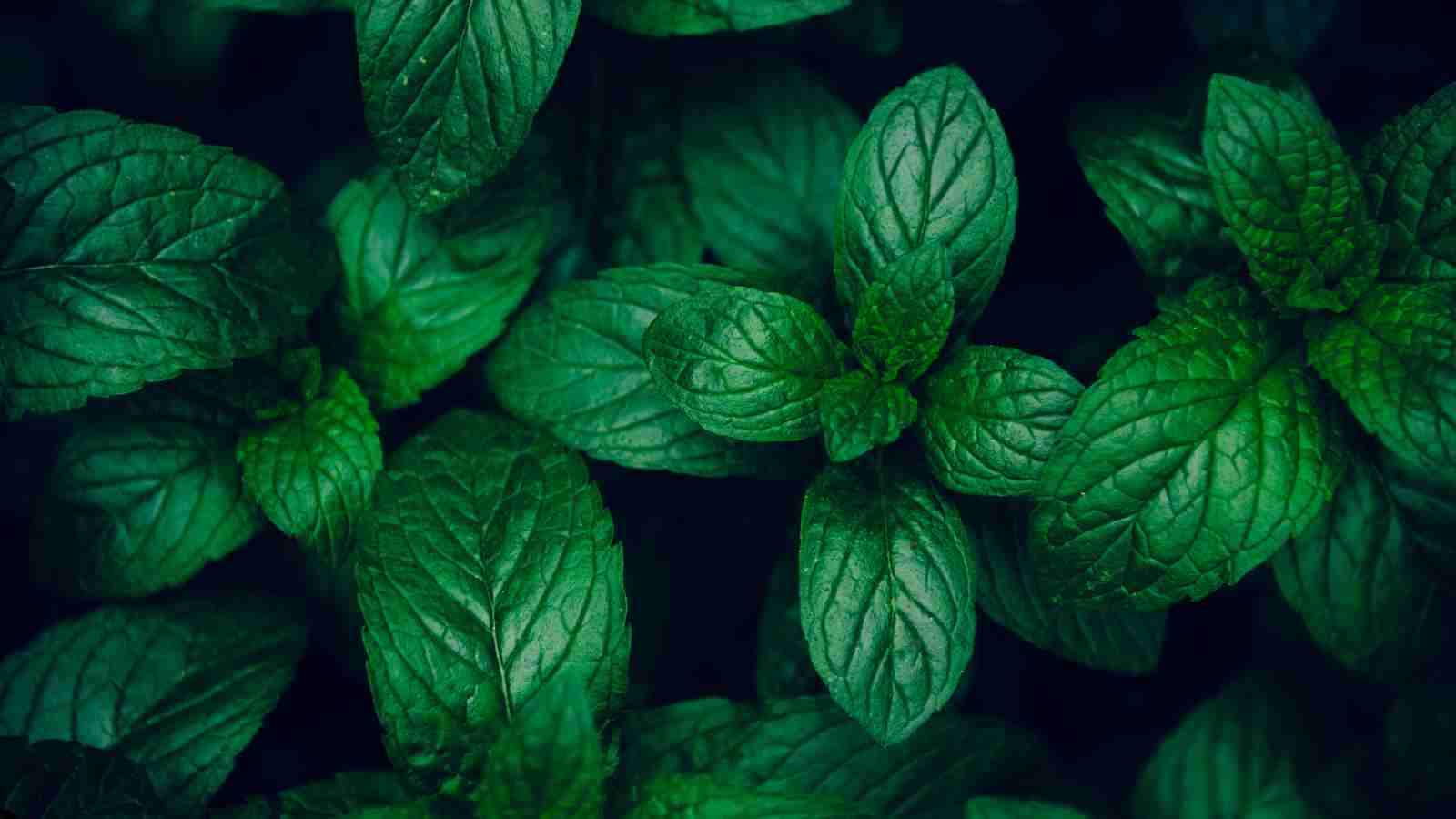
Mint, known scientifically as Mentha, is a popular herb famous for its aromatic leaves. It is part of the Lamiaceae family and is widely used for its flavor in recipes, beverages, and for medicinal purposes. Mint plants are hardy perennials that are easy to grow and maintain.
Mint Varieties to Grow
There are several varieties of mint to consider for your garden, including peppermint (Mentha piperita), spearmint (Mentha spicata), apple mint (Mentha suaveolens), and chocolate mint (Mentha x piperita ‘Chocolate’). Each variety has unique flavors and uses.
Growing Mint from Seed or Propagating from Cuttings?
Mint can be grown from seeds, but it is easier and faster to propagate from cuttings. To propagate, simply cut a healthy stem about 4-6 inches long, remove the lower leaves, and plant it in moist soil or water. Roots usually develop within a few weeks.
Check out the video below where we did an experiment and you can see that growing Mint from cuttings is faster, and actually also easier, than growing mint from seeds:
How to Plant Mint
Mint thrives in well-drained, fertile soil with a pH between 6.0 and 7.0. It prefers partial shade but can also grow in full sun. When planting mint, space the plants 18-24 inches apart to allow for spreading.
1. Choose a Location
- Sunlight: Mint prefers partial shade but can tolerate full sun.
- Soil: Choose a spot with well-drained, fertile soil. Mint thrives in soil with a pH between 6.0 and 7.0.
2. Prepare the Soil
- Amend Soil: Work in some compost or aged manure to enrich the soil.
- Weed Out: Remove any weeds from the planting area to reduce competition for nutrients.
3. Planting
- From Seedlings or Cuttings: While you can grow mint from seeds, planting from seedlings or root cuttings is more effective and provides quicker results.
- Spacing: If planting multiple mint plants, space them about 18-24 inches apart to give them room to spread.
4. Planting in the Ground
- Dig a Hole: The hole should be slightly larger than the root ball of the mint plant.
- Position the Plant: Place the mint plant in the hole so that the top of the root ball is level with the soil surface.
- Backfill the Hole: Fill the hole with soil and gently tamp down to remove air pockets.
5. Planting in Pots
- Choose a Pot: Select a pot that is at least 12 inches in diameter with good drainage holes.
- Add Potting Mix: Use a general-purpose potting mix. You can mix in a little compost for added nutrients.
- Plant: Plant the mint as you would in the ground, ensuring the root ball is level with the top of the soil.
6. Watering
- Initial Watering: Water the plant thoroughly after planting to settle the soil around the roots.
- Ongoing Care: Keep the soil consistently moist but not waterlogged.
7. Mulching
- Apply Mulch: Add a layer of organic mulch around the plant to help retain moisture and suppress weeds.
8. Monitor Growth
- Check for Spread: Mint is known for its vigorous growth. Keep an eye on the plant and consider trimming back if it spreads too much.
By following these steps, you should be able to successfully plant and grow mint in your garden or in a pot, ensuring a healthy plant that can be enjoyed for its aromatic leaves.
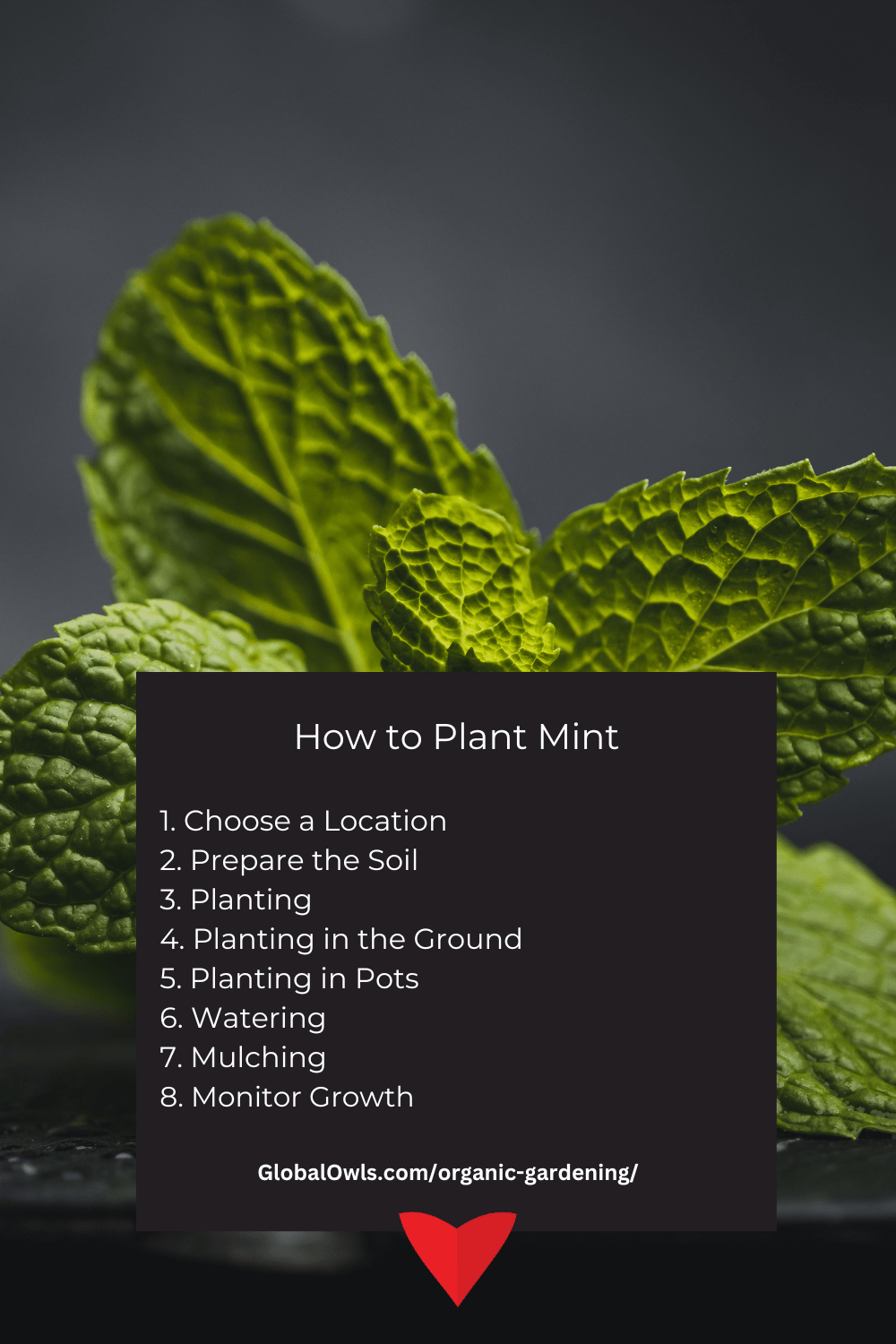
Growing Mint in a Pot
Growing mint in pots is an excellent way to control its invasive nature. Use a pot that is at least 12 inches in diameter and has good drainage holes. Regularly water the plant to keep the soil moist.
Growing Mint at Home
Mint can be grown indoors on a sunny windowsill or outdoors in a garden. For indoor growth, ensure the plant receives at least 4-6 hours of sunlight each day.
1. Choosing the Right Variety
- Select a Variety: Consider what type of mint you’d like to grow (e.g., peppermint, spearmint). Some varieties might be better suited to your cooking needs or flavor preferences.
2. Selecting the Location
- Outdoors: Choose a spot in your garden that receives partial shade or full sun.
- Indoors: Find a sunny windowsill where the plant can get at least 4-6 hours of sunlight daily.
3. Preparing the Container (for Indoor or Limited Outdoor Space)
- Select a Pot: Use a pot that is at least 12 inches in diameter with adequate drainage holes.
- Soil Preparation: Fill the pot with a high-quality potting mix mixed with some compost for nutrients.
4. Planting Mint
- Propagation: While you can start mint from seeds, it’s quicker to start from cuttings or seedlings.
- Planting: Place the plant or seeds in the soil. For cuttings, bury about an inch of the stem in the soil. For seedlings, ensure the root ball is level with the soil surface.
5. Watering
- Initial Watering: Water thoroughly after planting.
- Ongoing Watering: Keep the soil consistently moist but not soggy. Mint does not like to dry out.
6. Providing Light (Indoor Plants)
- Sunlight: Ensure the plant receives sufficient light. If natural light is inadequate, consider using a grow light.
7. Feeding the Plant
- Fertilizer: Apply a balanced, all-purpose liquid fertilizer every 4-6 weeks during the growing season.
8. Pruning and Maintenance
- Pruning: Regularly pinch off the tips of the mint to encourage bushier growth and prevent legginess.
- Monitor for Pests: Keep an eye out for common pests like aphids and spider mites, especially on indoor plants.
9. Controlling Growth
- Outdoor Plants: Mint can be invasive. To control its spread, consider planting it in a bottomless container buried in the ground.
- Indoor Plants: Regularly trim the plant to keep it manageable and healthy.
10. Harvesting
- Harvesting Leaves: Pick leaves as needed. Frequent harvesting encourages the plant to grow fuller and bushier.
By following these steps, you can successfully grow mint at home, ensuring a steady supply of fresh mint for your culinary needs or just to enjoy its fresh, aromatic presence. Whether indoors or in your garden, mint is a low-maintenance and useful plant to have around.

How to Care for Mint
Mint requires little care once established. Keep the soil consistently moist and weed regularly. Apply a balanced fertilizer every few months to support vigorous growth.
Caring for mint is relatively simple, making it an excellent choice for both novice and experienced gardeners. Here’s how to ensure your mint plants thrive:
- Watering: Mint prefers moist soil, so regular watering is crucial. Aim to keep the soil consistently damp but not waterlogged. During hot, dry periods, you may need to water the plants more frequently.
- Weeding: Keep the area around your mint plants free from weeds, which compete for nutrients and space. A clean planting area helps prevent pest infestations and diseases.
- Mulching: Applying a layer of organic mulch around mint can help retain soil moisture and suppress weeds. It also keeps the soil cool and moist, which mint plants love.
- Fertilizing: Feed your mint plants with a balanced, all-purpose liquid fertilizer every 4-6 weeks during the growing season to promote healthy growth and abundant leaf production.
- Pruning: Regularly trim back your mint to prevent it from becoming leggy and to encourage a bushier, more compact growth habit. This also helps to rejuvenate older plants.
- Pest and Disease Management: Watch for signs of pests such as aphids and spider mites. Treat infestations promptly with insecticidal soap or neem oil. Good air circulation and proper watering techniques can help prevent fungal diseases.
How to Harvest Mint
Harvest mint leaves as needed by cutting the stems. For the best flavor, harvest in the morning when the essential oils are strongest. Regular harvesting encourages bushier growth.
Harvesting mint is straightforward and doing it correctly can enhance the plant’s growth and yield:
- When to Harvest: The best time to harvest mint leaves is in the morning when their essential oils are at their peak, making the flavors more intense.
- How to Harvest: Use a pair of garden shears or scissors to cut stems just above a leaf node. This encourages the plant to branch from the cut, leading to fuller growth.
- Frequency of Harvesting: Regularly picking leaves will help keep the plant productive. During the growing season, you can harvest every few weeks.
- Harvest Before Flowering: If you notice flower buds forming, it’s a good time to harvest. Flowering can reduce leaf production and change the flavor of the leaves.
How to Prepare and Use Mint
Mint leaves can be used fresh or dried in a variety of dishes and drinks. They are commonly used in teas, jellies, sauces, and desserts. Fresh leaves add a vibrant flavor to salads and beverages.
Mint is versatile in the kitchen and can be used in many culinary preparations:
- Fresh Mint: Incorporate fresh mint leaves into salads, sprinkle over desserts, or stir into drinks for a burst of freshness. Muddling mint leaves helps release their flavor, which is perfect for cocktails like mojitos.
- Cooking with Mint: Mint is a staple in many sauces, marinades, and dressings. It pairs well with lamb, poultry, and many vegetables.
- Mint Tea: Fresh or dried mint leaves can be steeped in hot water to make a soothing herbal tea.
- Desserts: Mint complements chocolate well, making it a fantastic addition to brownies, chocolate mousse, and other sweet treats.
How to Store Mint
Fresh mint leaves can be stored in the refrigerator wrapped in a damp paper towel and placed inside a plastic bag for several days. For longer storage, mint can be dried or frozen.
Proper storage of mint ensures that you can enjoy its freshness for longer periods:
- Refrigerating Fresh Mint: Wrap mint leaves in a damp paper towel and place them in a plastic bag. Store in the refrigerator’s crisper drawer, where they can last for several days to a week.
- Freezing Mint: For longer storage, chop the mint leaves, pack them into an ice cube tray, cover with water, and freeze. The mint ice cubes can be added to drinks or thawed for cooking.
- Drying Mint: Tie mint stems together and hang them upside down in a cool, dark place to dry. Once dried, strip the leaves from the stems and store them in an airtight container away from light. Dried mint is excellent for teas and can be rehydrated for use in recipes.
Mint Pests and Diseases
Common pests include aphids, spider mites, and mint rust. To manage pests, use insecticidal soap and remove affected parts of the plant. Ensure good air circulation and avoid overhead watering to prevent fungal diseases.
Conclusion
In conclusion, growing mint is a delightful and simple gardening project that yields fragrant and flavorful rewards. Whether you choose to cultivate it indoors on a sunny windowsill or in a lush garden bed outdoors, mint will thrive with minimal care. By following the step-by-step guides provided, you can ensure your mint plants are healthy, vibrant, and productive. Remember to harvest regularly to encourage growth and enjoy the fresh zest mint brings to your culinary creations and beverages. With mint in your garden or home, you’re not just growing a plant—you’re enhancing your living space and kitchen repertoire. So, don’t hesitate, plant your mint today and revel in the lush, aromatic joys it brings!
FAQ
What are the basic requirements for growing mint?
Mint thrives in moist, well-drained soil with a pH between 6.0 and 7.0, and it prefers partial shade to full sun. It requires regular watering to keep the soil consistently damp but not waterlogged.
How do you plant mint?
Mint can be planted using seeds, cuttings, or starter plants. Plant mint in the spring or fall by placing it in a pot or the ground at a depth of about 1 inch, spacing plants or rows about 18 inches apart to allow for spreading.
Can mint be grown indoors?
Yes, mint can easily be grown indoors. Place it in a container with sufficient drainage and position it where it will receive indirect sunlight for at least 4-6 hours per day. Water regularly to keep the soil moist.
What are the best mint varieties to grow?
Popular varieties include peppermint, spearmint, apple mint, and chocolate mint. Each has unique flavors and uses, ranging from culinary to aromatic applications.
How do you harvest mint?
Mint leaves can be harvested at any time once the plant has established itself. For the best flavor, harvest mint leaves in the morning before the sun grows too strong. Regular harvesting encourages the plant to become bushier and more productive.
How often should mint be watered?
Mint should be watered frequently to maintain moist soil, especially during hot, dry periods. Water at the base of the plant to avoid wetting the leaves, which can lead to disease.
Does mint require fertilization?
Mint generally requires little fertilizer. If growth seems slow, you can apply a balanced, all-purpose fertilizer in the early spring and possibly again in mid-summer, following the manufacturer’s instructions.
How do you prevent mint from spreading uncontrollably?
Mint is known for its aggressive growth. To prevent it from taking over garden spaces, plant mint in a container or a confined space. Alternatively, use barriers in the soil to restrict root spread.
What pests and diseases commonly affect mint?
Common pests include aphids and spider mites. Diseases like powdery mildew and rust can also occur, especially in humid conditions. Prevent issues by ensuring good air circulation around plants and using organic pest control methods when necessary.
Can mint be used as a companion plant in the garden?
Yes, mint can deter pests like ants and aphids, making it a good companion for cabbage, tomatoes, and several other garden vegetables. However, due to its invasive nature, keep mint contained or consider placing potted mint plants near susceptible crops.
When is the best time to plant mint outdoors?
The best time to plant mint outdoors is in the spring after the last frost, as warm, frost-free weather encourages strong growth. In mild climates, mint can also be planted in the fall.
How can I propagate mint from cuttings?
To propagate mint from cuttings, take a 4-6 inch cutting from a healthy mint plant just below a node (where the leaf grows out of the stem). Remove the lower leaves and place the cutting in water until roots develop, then transplant it into soil.
What type of container is best for growing mint indoors?
Choose a container with ample drainage holes and ensure it’s wide enough to accommodate mint’s spreading nature. A pot that is at least 8-12 inches in diameter will allow enough space for growth.
How much sunlight does mint need when grown indoors?
Mint grown indoors should be placed in an area that receives indirect light for at least 4-6 hours per day. Direct sunlight can be too intense and may scorch the leaves, so a north-facing window or a spot that gets filtered light is ideal.
How do I deal with mint rust, a common fungal disease?
If you notice rust-colored spots on your mint leaves, remove the affected foliage and dispose of it away from your garden. Improve air circulation around your plants and reduce overhead watering to prevent further outbreaks.
What should I do if my mint plants start to wilt?
Wilting mint plants may need more water, especially in hot weather, or they could be suffering from root rot due to overwatering. Check the soil moisture and adjust your watering schedule accordingly. Ensure the plant has good drainage and healthy soil.
How do I winterize mint growing outdoors?
In colder climates, cover your mint plants with mulch to protect the roots from freezing. Mint can also be potted and brought indoors during the winter months to continue growing.
Can mint be grown hydroponically?
Yes, mint is an excellent candidate for hydroponic growing. It thrives in water-based environments, making it easy to grow without soil, provided it has sufficient nutrients and light.
How do I rejuvenate an overgrown mint patch?
To rejuvenate an overgrown mint patch, trim back the excessive growth, remove any dead or diseased parts, and thin the plants to improve air circulation. You can also lift, divide, and replant clumps to refresh the patch.
What are some creative ways to use harvested mint?
Mint is versatile in the kitchen and can be used in teas, cocktails, salads, sauces, and desserts. It’s also great for making natural insect repellents, herbal sachets, and as a fresh garnish to meals.
How often should I repot mint grown in containers?
Mint should be repotted every 1-2 years to prevent it from becoming root-bound and to replenish the soil with fresh, nutrient-rich mix. This helps maintain vigorous growth and optimal health.
What soil amendments are beneficial for growing mint?
Mint benefits from soil amendments that improve drainage and nutrient content. Adding organic compost or well-rotted manure can enhance soil fertility, while perlite or vermiculite can improve soil structure and drainage.
Can mint be grown from seed, and how reliable is this method?
While mint can be grown from seeds, it is less reliable than propagation from cuttings or division because seed-grown mint might not retain the parent plant’s characteristics. If you choose to grow mint from seeds, start them indoors in seed-starting mix and keep the soil moist.
How do I prevent my mint from flowering and becoming leggy?
To prevent mint from flowering and becoming leggy, pinch off the flowering buds as they appear and regularly harvest the leaves. This encourages the plant to become bushier and focus energy on leaf production.
Is it necessary to isolate different varieties of mint when planting?
Isolating different mint varieties can help maintain distinct flavors and characteristics, as mints can cross-pollinate and hybridize. Plant different varieties in separate containers or use barriers in the ground to keep them apart.
How can I use mint as a natural pest repellent in the garden?
Mint acts as a natural pest repellent against insects like ants, aphids, and cabbage moths. Plant mint around the garden perimeter or interplant it with susceptible crops to help deter pests.
What is the impact of mint on nearby plants in a garden setting?
Mint can be invasive and may compete with nearby plants for space and resources. It’s best to plant mint in containers or enclosed areas to prevent it from overtaking other plants in your garden.
How does mint react to different watering systems, like drip irrigation or sprinklers?
Mint prefers consistent moisture, which can be effectively managed with drip irrigation to deliver water directly to the roots. Sprinklers can also be used but may encourage leaf diseases if the foliage remains wet for too long.
What are the first aid measures if mint shows signs of nutrient deficiency?
If mint shows signs of nutrient deficiency, such as yellowing leaves or stunted growth, apply a balanced, water-soluble fertilizer or top-dress with compost. Ensuring adequate light and water is also crucial for recovery.
Are there any ethical considerations in collecting wild mint for cultivation?
When collecting wild mint, it’s important to consider environmental impact and legal restrictions. Always ensure that the area permits the removal of plants, and take only a small portion to avoid disrupting the natural ecosystem.
More ways to improve your Gardening skills
Learn everything you need to know about Organic Gardening from Pros
Start your Free Audible Trial and get access to the Top Gardening Audio Books for an entire month. Check it out!
